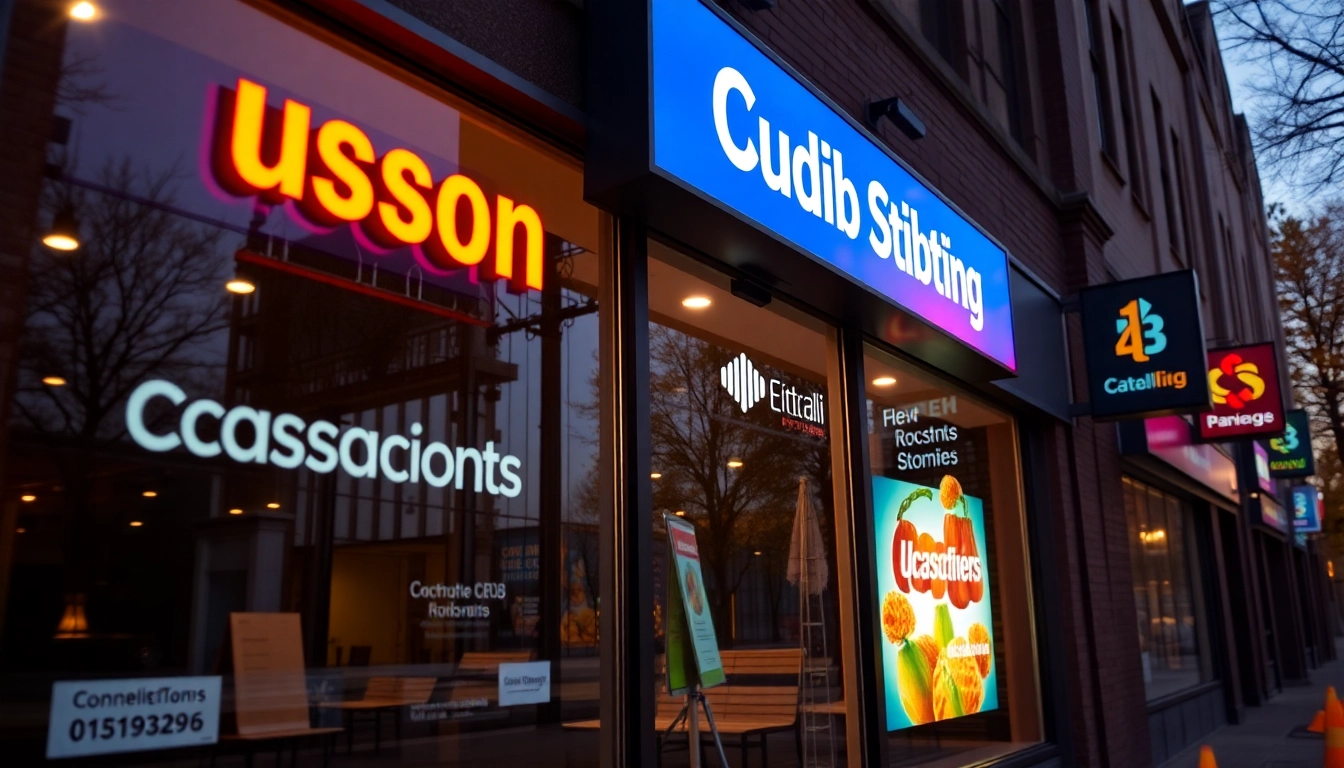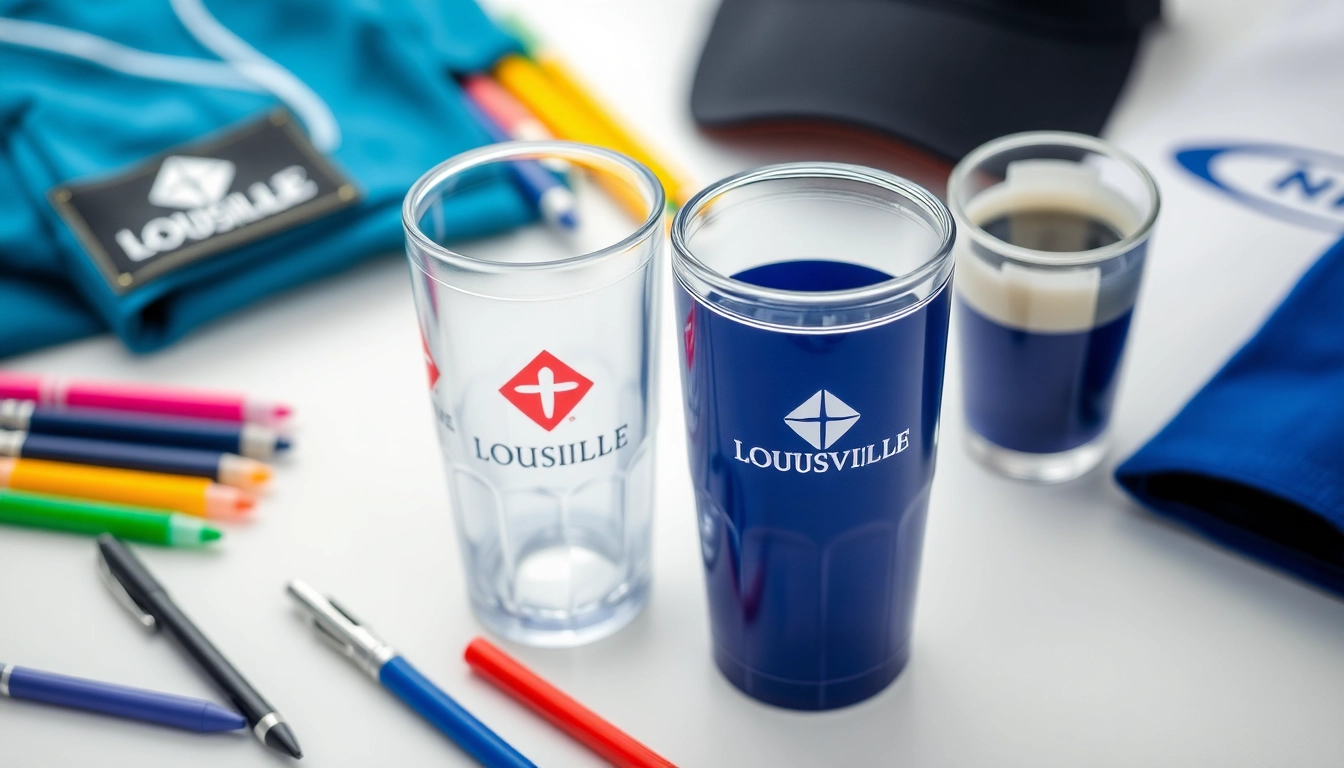Introduction to Custom Signs: Elevating Your Business Identity
In today’s competitive marketplace, standing out is more crucial than ever. Custom signs are a powerful tool in your branding arsenal, enabling your business to communicate its identity, values, and offerings in a visually compelling way. Unlike standard signage, custom signs provide unique opportunities for personalization, ensuring your message is delivered with clarity and impact. These signs are not just informative but also serve as a reflection of your brand personality, making your business recognizable and memorable. From storefront logos to interior graphics, the strategic use of custom signs can significantly boost customer engagement and foster brand loyalty.
An effective custom sign isn’t simply about aesthetic appeal; it combines thoughtful design, appropriate materials, technological integration, and strategic placement. By investing in well-designed signage tailored to your industry and target audience, you directly influence customer perception and foot traffic. This comprehensive guide explores the nuances of designing, manufacturing, installing, and measuring the success of custom signs, equipping you to make informed decisions that drive your business growth.
Understanding the Importance of Custom Signs in Branding
Custom signs play a pivotal role in establishing your brand’s visual presence. They act as silent ambassadors, communicating your identity to potential customers even before they step inside. Unlike generic signage, custom signs are crafted to align impeccably with your brand message, color palette, fonts, and overall aesthetic. They reinforce your brand identity, making it easier for consumers to associate your signage with your offerings and reputation.
Furthermore, custom signage enhances your visibility in crowded locations and competitive markets. Properly designed signs can elevate a business’s perceived professionalism, trustworthiness, and creativity. For instance, a well-lit illuminated sign with distinctive typography can catch the eye amidst a sea of competitors, thereby increasing foot traffic and inquiries.
A case study from a retail store demonstrated that implementing a series of custom window decals and exterior signs resulted in a 30% increase in walk-in customers within six months. This example underscores how investing in personalized signage translates directly into tangible business benefits.
Key Benefits of Custom Signs for Customer Attraction
- Enhanced Visibility: Custom signs are tailored for maximum visibility. Bright colors, strategic placement, and unique design elements make your business stand out, especially in high-traffic areas.
- Brand Consistency: They reinforce your brand message through consistent use of logos, colors, and messaging across all signage, fostering recognition and trust.
- Increased Credibility: Professionally designed custom signs project a polished image, demonstrating your commitment to quality and customer service.
- Versatility in Promotion: Custom signs can be adapted for sales events, grand openings, or seasonal promotions, providing flexibility for marketing campaigns.
- Local Community Engagement: Yard signs and banners tailored to specific events or campaigns can increase community involvement and awareness.
For example, a restaurant that customizes its signage to match seasonal themes or special menu offerings can entice spontaneous visits while maintaining a consistent brand image.
How Custom Signs Compare to Standard Signage Options
When evaluating signage options, the distinction between custom and standard signs becomes evident in quality, branding potential, and adaptability. Standard signs often come pre-made, designed for mass production, and lack personalization. While they can be cost-effective initially, they may lack the uniqueness needed to distinguish your business.
Conversely, custom signs are designed specifically for your brand, allowing for creative control over layout, materials, colors, and messaging. They serve to create a cohesive brand experience and can integrate complex graphics, logos, and special features that standard signs cannot accommodate.
A comparative analysis reveals that custom signs, though sometimes more expensive upfront, offer superior longevity, brand impact, and flexibility. They can also be designed with industry-specific considerations—for example, using glare-resistant materials for outdoor signage or integrating digital components for dynamic messaging.
Designing Effective Custom Signs: From Concept to Creation
Best Practices for Visible, Memorable Signage
Creating effective custom signs begins with a clear understanding of your target audience and brand message. Start with simple, bold focal points—use high-contrast colors to improve readability from a distance. Prioritize legibility by selecting appropriate fonts that reflect your brand personality but are easy to read at various distances and lighting conditions.
Using Color, Typography, and Graphics to Convey Your Message
Color psychology plays a crucial role in how your signage influences perceptions. Choose colors aligned with your brand identity to evoke specific emotions—blue for trust, red for excitement, green for eco-consciousness. Typography should complement your brand voice; a sleek sans-serif might work for modern brands, while a decorative font suits artisanal businesses. Graphics should be high-quality, scalable, and support your messaging without cluttering the design.
Incorporating Brand Elements into Custom Sign Designs
Consistency is key. Incorporate logo, tagline, and brand colors into your signage to reinforce recognition. Use design templates as a foundation to maintain uniformity across all signage types. For instance, a bakery might integrate a bread icon in their signage, using warm colors and rounded fonts to evoke a friendly and inviting atmosphere.
Collaborating with experienced designers ensures your sign communicates effectively. They can provide insights into industry trends, accessibility standards, and innovative design techniques that make your signage stand out.
Materials and Technologies for Durable Custom Signs
Popular Materials: Vinyl, Aluminum, Acrylic, and Wood
Selection of material influences durability, appearance, and maintenance requirements. Vinyl is cost-effective and versatile, ideal for banners and decals. Aluminum offers corrosion resistance and a sleek, modern look, suitable for outdoor signage. Acrylic provides a high-gloss finish and is excellent for illuminated signs or interior displays. Wood adds a classic, warm touch, perfect for rustic brands or interior designs requiring a natural aesthetic.
Choosing Between Static and Digital Signage Solutions
Static signs, made from durable materials like metal and PVC, are ideal for long-term installations. Digital signs incorporate LED or LCD technology and allow for dynamic content updates, making them perfect for promotions, live updates, or interactive displays. The choice depends on your budget, message frequency, and environmental factors.
Maintenance and Longevity of Different Sign Materials
Proper maintenance extends the lifespan of your signs. Metal signs require periodic cleaning and checks for corrosion. Vinyl and plastic signs may need protection against UV fading, which can be mitigated with UV-resistant coatings. Digital signs demand regular software updates and hardware checks to ensure consistent operation.
A well-chosen material paired with suitable maintenance protocols ensures your custom signs remain vibrant and effective for years, delivering consistent value.
Strategies for Custom Sign Installation and Placement
Best Locations to Maximize Visibility
Strategic placement is critical. Position signs where they are clearly visible to your target audience—above storefronts, at eye level near entrances, or along key roadways. Consider sightlines, obstructions, and lighting conditions. Use elevated mounting for increased visibility and ensure signs are not obstructed by trees, parked vehicles, or other structures.
Ensuring Compliance with Local Regulations and ADA Standards
Before installation, review local signage ordinances, zoning laws, and accessibility standards. ADA-compliant signs should include tactile features, braille, and suitable heights for people with disabilities. Non-compliance can result in costly penalties and reduced accessibility.
Designing Signs for Different Environments: Indoor vs Outdoor
Indoor signs prioritize aesthetics and brand consistency, often using materials like acrylic or vinyl decals. Outdoor signs require weather-resistant materials—from aluminum to UV-protected vinyl—and should incorporate proper lighting. For high-traffic areas, durability and vandal resistance are paramount.
Measuring Success and ROI of Custom Sign Campaigns
Tracking Increased Foot Traffic and Customer Engagement
Use methods such as foot traffic counters, promotional codes, or QR codes on signs to quantify the impact. Analyzing sales data before and after signage updates provides concrete insights into effectiveness.
Adjusting Signage Strategies Based on Performance Data
Regularly review the performance metrics and be prepared to refine your signage. This could involve changing designs, updating messaging, or relocating signs to more strategic spots. Continuous improvement maximizes ROI.
Case Studies: Successful Custom Sign Implementations
A retail chain revamped its store signage with cohesive, custom LED displays across all locations. Within three months, foot traffic increased by 25%, and sales rose by 15%. The investment in high-quality, branded signage facilitated better customer recognition and engagement, demonstrating the tangible value of effective signage strategies.






